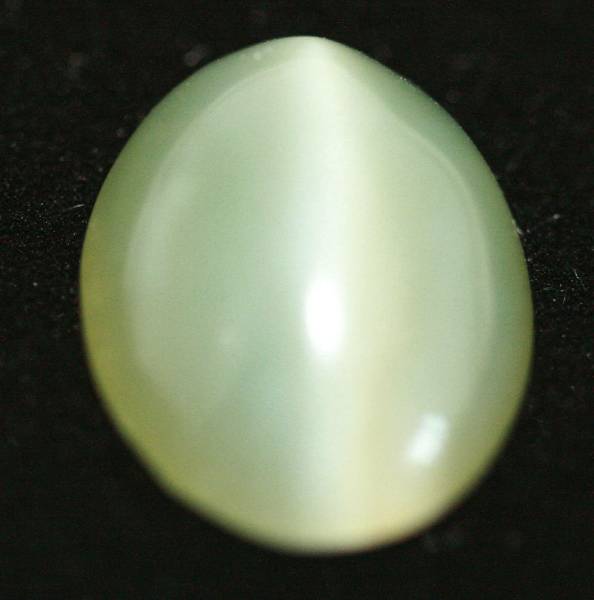| Nathan |
| 等级:翡翠水手 |
 |
| 权限:普通用户 |
| 尚未开博 |
| 积分:340 |
| 发帖数:41 |
| 注册:2008年11月23日 |
|
|
|
这两天,我在英国珠宝鉴定师协会GEM-A的讨论区里发了个关于“猫眼玉”的讨论贴,很幸运得到很多来自世界各地珠宝鉴定师,地理学家,和矿物学家的回复。获益良多阿。在这里跟大家分享分享。
首先我节选了一些个人觉得比较好的回复内容。
1,A quick note - I am working on a museum installation which includes an example. You might want to seek out a paper by G.I. Hemrich, "Chatoyant jade - a new find." (Gems and Minerals 1983) which describes cat's eye nephrite originating near Jade Cove, California, USA. A recent discussion with a friend at SSEF about this brought up Taiwan as a source of cat's eye nephrite, and in fact, Fengtien is mentioned by Joel Arem (1987) as an origin in that country. Arem also indicates that the chatoyancy is a result of parallel arrangements fibers ( ferroactinolite content = 10%). There is a more detailed discussion of chatoyancy in nephrite in the Kievlenko (2003) Geology of Gems book. John Sinkankas (1955) refers to cat's eye actinolite occurring as seams in nephrite (Kobuk, Alaska) and also refers to chatoyant nephrite in the Black Fir Mine, California (1997). A colleague on the project who is a noted mineralogist reasoned the same as Kievlenko; we have discussed briefly possibilities for formation of chatoyancy in jadeite, but I don't have any references in the literature to share at this time. ---===---===Elise Skalwold, FGA, GG
2,I've not heard about jadeite specifically, but when people talk about"cat's-eye jade" I gather that they're usually referring to Russian nephrite. However, there is a caveat: people consider 'jade' (both nephrite AND jadeite) as a rock with a tough, interlocking fibrous structure. I have therefore heard the argument that "cat's-eye" jade - where the fibresare mostly aligned in a single direction, hence the chatoyancy - doesn'tactually meet the structural criteria for jade, even if it has the correct chemical composition. Not sure if this is justified mineralogically, however - and how and where would you draw the line between an interlocking fibrous structure and a mostly aligned one?Perhaps there is a mineralogist on the list who can help? Some jadeite does have a kind of textural sheen to it, and I imagine it would display some chatoyancy if cabbed.
呵呵,好长的解释!这两个解释是节选的一部分。很有趣,两个讲的是完全对立的说法。
第一个说,软玉是有可能出现猫眼效果。而产生这种效果的主要原因是,软玉里含有10%左右的二价铁阳起石(ferro-actinolite)纤维状内含物,而且它们都是朝同一方向平行排列的。节选里提到这种猫眼软玉的产地,美国加州和台湾。对于猫眼硬玉(翡翠),文章的作者说没有找到相关的资料去证明其存在,也称从没见过。
第二个提出一个很有趣的解说。他说,产生猫眼效果的原理是,一定量纤维状内含物相互平行并且朝同一方向排列。而玉的晶体结构是,相互交错的纤维状晶体结构。如果两者结合在一起,就会出现矛盾。你不可能在一个相互交错的结构里找到平行并且朝同一方向排列的组合。所以他不认为玉(包括软玉和硬玉)里会出现猫眼效果。但他也提到,人们的误会有可能是因为表面的光泽产生。他也提到这个问题需要矿物学家再去确定。
总结各个回复,我暂时还没发现有证据证明有“猫眼硬玉(翡翠)”,但却有不少对于“猫眼软玉”的争论。
有个珠宝鉴定师给我发了一张“猫眼软玉”照片。大家看看,讨论讨论!
----------------------------------------
 Neph_Cats_Eye.jpg(31356字节) Neph_Cats_Eye.jpg(31356字节)

|
 | | FGA, HRD-CDG, FCGmA |
|
|
|
|
 | 论坛
| 论坛 | 论坛
| 论坛 网站首页 -> 论坛首页 -> 交流中心 -> 藏品交流 -> 续:关于“猫眼软玉与硬玉”的讨论。希望大家近来讨论讨论!
网站首页 -> 论坛首页 -> 交流中心 -> 藏品交流 -> 续:关于“猫眼软玉与硬玉”的讨论。希望大家近来讨论讨论!
